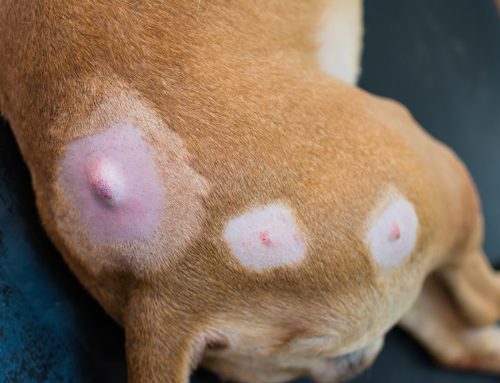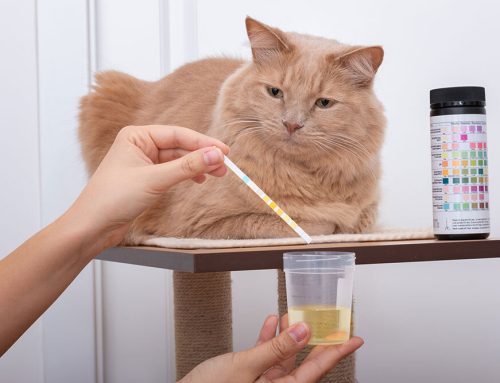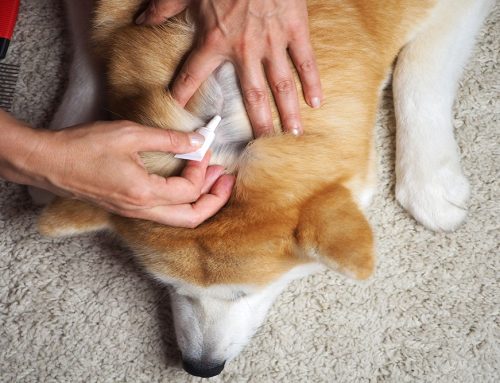Hot Spots! No it is not the new hot teen spot in town or the new restaurant in town or the new development where everyone wants to live. A hot spot on an animal is an acute moist inflammatory/bacterial dermatitis. It goes by the names such as moist eczema, pyotraumatic dermatitis, and acute moist dermatitis. Pruritus, hair loss, pain, redness, severe inflammation, irritation, and exudate characterize this disease. Because of self-trauma by the animal, the spot grows quickly.
Usually only one location on the body is affected at a time. The most likely places are around the neck and head or around the tail or distal back, but they can occur anywhere on the body. There is not one single cause of this condition. Allergic skin reactions is the most common, but can also be caused by flea bites, infected ears, mosquito bites, impacted anal glands, or clipper burns. Once the skin is irritated, the animal bites or scratches at the area and causes the acute moist dermatitis. It can develop within a few hours and enlarge rapidly. Some dogs are more prone to moist dermatitis than others, especially Golden Retrievers. These lesions are more apt to be seen during allergy season. Even though moist dermatitis is a painful, acute, and aggressive lesion, it can usually be cured easily if treated properly. This is not a condition to wait and see if it will go away. It is usually gets worse and can possibly cause scarring if left untreated.
Immediate treatment by the owner will slow down the progression of the lesion. Gently washing the area with soap will help along with a cortisone cream or antibiotic cream. Keeping the pet from bothering the area is the most important thing. Socks over the feet will hinder scratching from harming the area. Each veterinarian has their own protocol, but each treatment is basically the same. The hair is clipped over the area. The area is then cleansed gently to remove the debris and a drying agent or astringent is used to dry out eh lesion. Antibiotic and cortisone sprays or creams may also be used. A systemic corticosteroid will keep the animal from biting or scratching the affected area and give quick relief from the irritation. With proper treatment the lesion usually cleans up in a few days to a week with hair growth in a few weeks.
The initial diagnosis can be overwhelming. The first few months are the most critical to get the diabetes regulated. However, with proper treatment, dogs with diabetes have survival rates very similar to those of non-diabetic dogs of the same age and gender. Established in 1981, Palm City Animal Medical Center is dedicated to providing the best possible care for your pets. With focuses on compassionate care in surgery, physical therapy and rehabilitation, preventative medicine, extensive diagnostics, and emergency service, Palm City Animal Medical Center combines exceptional medical care with a caring philosophy for pets and their owners. For more information, call 772-283-0920, visit www.palmcityanimalmedicalcenter.com or find us on Facebook at www.facebook.com/PalmCityAnimalClinic.








Leave A Comment